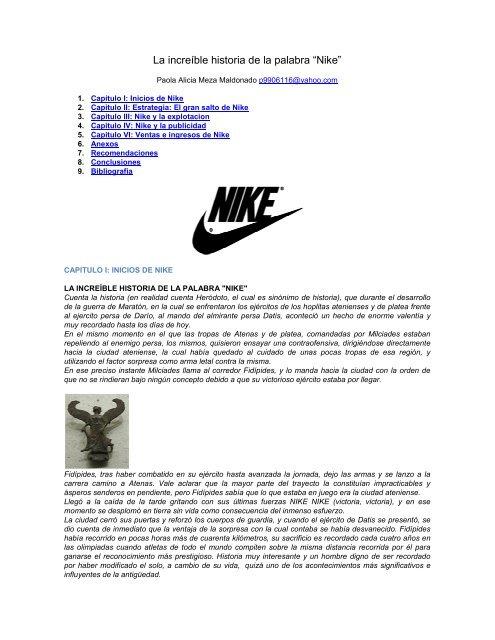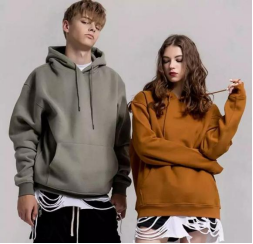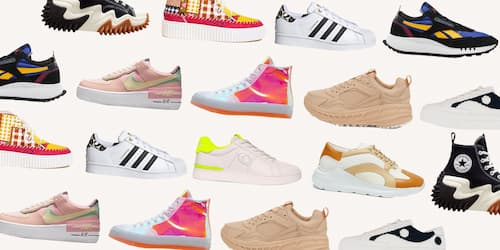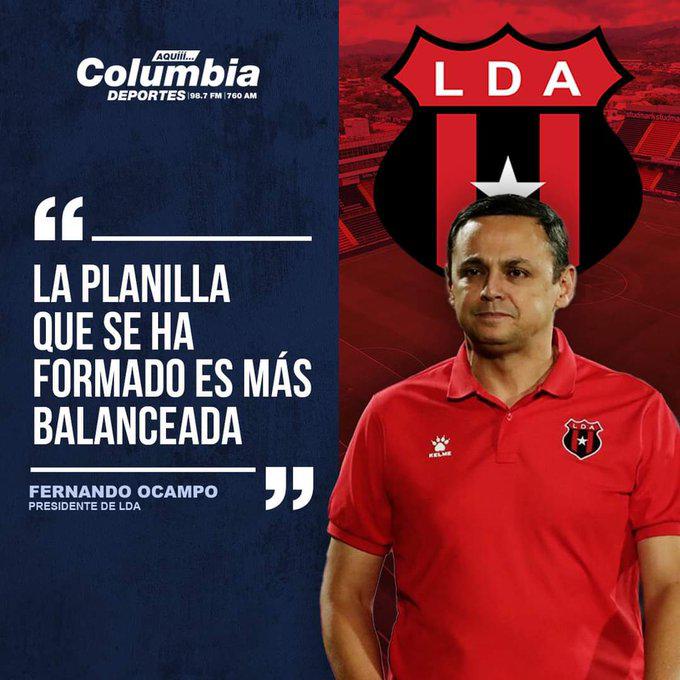In association with Nike, a worldwide success of the most read sport of the day of the week of the year of history
The leading company in sports clothing and footwear today set a model to follow in terms of how a brand image is built. Thus, the image of Nike has created its characteristic guidelines by the agency Wieden & Kennedy. Like, for example, its characteristic logo, accompanied by the Swoosh (Nike's wing), or its famous slogan, which is already part of common language ('Just do it'), without leaving aside the use of the image of world sports stars, such as Michael Jordan. Nike garments occupy a prestigious place in the daily clothing of millions of consumers. And, although today its image is in controversy, the clothing label continues to top sales, with a turnover of 9,000 million dollars between the months of January and May of last year.There is strength in unityThe founder of Nike, Phil Knight (a young graduate in business administration and later a professor at the University of Oregon, United States), had the vision of starting his own business, starting from providing athletes with the necessary clothing for the practice of his discipline. At the end of the '60s, the sportswear market was dominated by brands of German origin, such as Adidas, and sports footwear, such as Converse. This was well known to Knight, since he himself had been a middle-distance runner in college. On a trip to Japan, the audacious Knight contacted Onitsuka (Asic) Tiger, a sports shoe manufacturer, and convinced its owners that their product would have a very good market in the United States. Upon his return, in 1962, the young Phil founded “Blue Ribbon Sports” (BRS) and the following year, the company was already importing 200 pairs of high-tech sports shoes, at very low prices. BRS was joined, in 1964, by Bill Bowerman, the athletic group coach at the University of Oregon and a friend of Knight's, who would later work on prototypes and shoe designs. Bowerman, ever striving for perfection for his athletes, one day incidentally poured the plastic rubber from the shoe into a waffle maker and then toasted it. His tests with the soles led him to a surprising result: the modern long-distance running sole for sports shoes was born. The designs created by Bowerman for Nike were the best-selling footwear for sports and professional athletics, with models such as 'Marathon', 'Cortez' or 'Boston'. With the new decade, BRS changed its name to 'Nike Inc.'. The first employee of the new company, Jeff Johnson, proposed the name Nike, which corresponds to the Greek divinity of victory. Its correct pronunciation is separately: Ni-key. But for this new company a new image was necessary. So Knight decided to call one of his students (who would later become his wife), Caroline Davidson, to design a logo to be used on the side of the shoe. The young Caroline created the iconography of the Swoosh, Nike's wing that refers to the idea of speed. The design of the Nike logo, accompanied by the Swoosh, evolved over the years, but it was the Swoosh that became a part fundamental to the image of Nike. To such an extent that, from 1995, the Nike logo was transformed only into the Swoosh.Nike, reaching the first positionFinally, in 1972, Nike ended its business relationship with Onitsuka (Asic) Tiger and decided to start his own production. Two years later, the first Nike industrial plant was erected, in the town of Exeter, New Hampshire, United States. In '75 Nike's expansion was already global and the company had factories in Taiwan and Korea. In addition, that year Nike decided to open its second plant in the United States, in the town of Saco, Maine. Nike's profits had gone from $1.96 million in 1973 to $149 million in the early 1980s. By 1979, Nike was number one among the most popular companies. , and had become the leading brand in the sportswear industry, not only in the United States, but also in major markets such as Europe, Asia and Latin America. Its production expanded in such a way that it went beyond sports shoes and made all kinds of garments for athletes (shirts, overalls and pants, jackets, hats and even balls, among others). In 1984, Nike's net profits came to 919.8 million dollars. But, by that date, the sportswear market was not the same, since new competitors had emerged (such as L.A. Gear) that, added to the already traditional Adidas, Reebok, Converse, New Balance, Puma and Kappa, could make stagger even the largest.Although Nike had a long history, this was not enough for this new stage, in which the consumer was more reluctant to adopt a single brand. But, thanks to the efforts of Nike and, above all, to the unique creative work of the agency Wieden & Kennedy (led by Dan Wieden and Jim Risworld), the brand was repositioned as number one in the late '80s, and has remained there to this day. Today, Nike's product portfolio encompasses the following lines : ACG, Running, Tennis, Basketball, Baseball, Volleyball, Football (American football), Soccer (Soccer), Mountain biking, Tech Training, Track & Field (training line and course), Women (female line) and Golf. In turn, Nike has its own line of towels, backpacks and bags within the category of Miscellaneous products, in addition to the line of Personal Accessories, such as watches and glasses. Regarding technological innovation, the company stands out for the design of its shoes and quality of its garments, such as the electronic devices of the FIT (Functional Innovate Technology) line, which allow athletes to battle against heat, cold, snow, wind and their own heat during a physical activity.Strategies: together with athletesWhen Phil Knight got ahead with Nike in the mid-'60s, before investing in its advertising, he needed to get the brand recognized by its target audience: the athletes. To do this, Knight hired Jeff Johnson, a shoe salesman from California. Johnson did not like being called a "sales man" and chose to offer the product in non-traditional ways. His first step was to go to the universities and institutions where the runners practiced. His next step was to talk to the athletes, but above all to listen to what they needed to be able to go further and reach the goal. Little by little, the figure of the Nike representative became known within sports circles and, in turn, became familiar to the then unknown brand. Perhaps this was one of the first lessons that the successful brand gave to modern marketing, not because other companies had not taken this path, but because Nike's emphasis was placed on what the consumer needed, and not so much on the product to be purchased. sell. According to company spokespersons, "Johnson's communication with athletes became the key to Nike's product design and marketing strategy," to such an extent that "today the company still relies on this interaction and feedback with the athletes." athletes of all levels”. The great acid test for the company was its debut in the Olympic Trials, in 1972. But the first recognition of Nike's image, regionally and globally, would be given by the athletes who would use the brand in national and international competitions of this type. One of the first great sports idols to wear Nike was the North American legend Steve Prefontaine, an amateur runner who broke all records in the 2,000 and 10,000 meters, and participated in the 1972 Olympic Games in Munich, Germany. Sports professionalizationFrom the professionalization of sports disciplines, Nike began to occupy an ascending place in sporting events, first in track and field races and marathons, and then in multiple sports. In the early 1980s, Nike continued to implement its marketing, promotion, and event sponsorship strategies (such as when Alberto Salazar, who wore all of the brand's clothing, won the New York Marathon). The great success of this type of Nike's strategies reside in the fact that the brand can reach several places at the same time, through the transmission of the event itself, and thanks to the fact that the brand appears in the news and journalistic photos always together with the winners. But perhaps the most important point is that the consumer, a great admirer of the sport, sees the athlete's triumph as the image of the athlete and Nike as a whole. Another of Nike's distinctive features in terms of strategies is adding talent to the company, to strengthen its position within the world of professional sports. An example of this is the aforementioned case of Alberto Salazar, who after a successful career as a broker, was hired as a marketing consultant for the company. Salazar himself, in an interview with 'Ontherun.com', clarified that “all sports marketing departments have been given the goals for the identification of Nike with contracts to elite athletes, teams and events. In this way, these three points are used to promote the brand”. And he adds that "this is basically the job in the area of sports marketing."Nike plays first classFor Nike's image to enter the orbit of global brands, not only marketing strategies but also advertising creativity were important. Initially, Nike had the attention of two agencies: the prestigious Chiat/Day, based in Los Angeles, and Wieden & Kennedy (W&K), of Portland, Oregon. Although the small creative boutique W&K began its relationship with Nike in 1982, until mid-1984 it was only called "the other agency". W&K carried out important tasks for Nike, since its inception, such as advertising for the launch of the 'Nike Air' basketball and tennis shoes, or advertising for the Los Angeles Olympic Games, in 1984. Among the most remembered commercials carried out by W&K in its beginnings, are Instant Karma and Revolution. This latest commercial, created in 1985, used the classic Beatles song: Revolution.Nike Air, the lightest oneThe sneaker boom occurred in the '80s, and sneakers became into the “social status symbol among young people”. In this way, the classic rustic canvas footwear went from being an exclusive product for sports practice, and became part of the daily wardrobe. 'Nike Air' was a prototype of sneakers that the North American firm had been working on, in which used the latest technology. But it would not be until 1985, when the product finally went on the market. The characteristic of Nike Air was that it had 'air bags' (air bags) on the sole of the shoe. These bags allowed the shoe to be lighter than the conventional model. The Nike Air model began as a success for products in the basketball line, and continued to reach all categories: the secret lay in helping the athlete weigh less . Today it is commonplace to see 'air bags' in all sports shoe brands.Mike, Spike and W&KAlthough the first campaigns with basketball player Michael Jordan, a young player from Carolina del Norte, who had recently joined the Chicago Bulls, were devised by the Chiat/Day agency, the popular image of Jordan together with Nike would come from Wieden & Kennedy (W&K). Jim Risworld, a young W&K writer with a passion for basketball, knew that the figure of Michel Jordan was highly respected in the sports world. The basketball player's unique personality stood out on and off the court. According to David Halberstam's book "Playing for Keeps: Michael Jordan and the World He Made," Jim Risworld thought that "if Jordan was such an exemplary human being to earn the praise of the great Bill Russell (the coach and former superstar of the Boston Celtics), then it represented an exciting challenge for a publicity man: how to reveal that special quality in a 30-second film”. The answer for the W&K editor would be given from the film 'She's gotta have it ', from hitherto unknown director Spike Lee. This was the first film that the young filmmaker wrote, directed, produced, edited and starred (in the role of Mars Blackman). In the film, the character played by Lee was a basketball fanatic, passionate about Air Jordans, who found it very difficult to choose between his love for the sport and his love for a woman. For Jim Risworld, the idea from the Michael Jordan fan was great, because it gave him the chance to show all of Jordan's qualities as an athlete but, above all, as a human being. With an idea under his arm and with nothing to lose, Risworld contacted Spike Lee and proposed that he play his character as Mars Blackman but alongside Michael Jordan in the new Nike advertisements. In the first commercials, the duo 'Mike and Spike': After showing off the basketball player's sporting skills, Lee's character said forceful phrases like 'It's gotta be the shoes' to the camera. The campaign was a huge success for Nike. The sports brand and the combination of W&K with Michael Jordan and Spike Lee marked a creative path in the advertising environment: a simple idea with a clear advertising message could start a conversation with consumers. In the commercials created by W&K, basketball, like any other sport, could be beautiful, and Jordan was presented as the best man. Nike began to be on everyone's lips, even non-consumers, and the small Portland agency became central to the brand's advertising communication. Michael Jordan began his career as a superstar with the Chicago Bulls and became the 'face athlete of Nike', to the point that,when consumers went to stores, long before Jordan had his own line of company merchandise, they were already asking for Mike's new shoes. In turn, Jordan was called "the greatest basketball player in the world," and He became a sports and cultural icon. For his part, Spike Lee was the generator of a new crop of directors and even directed, himself, exclusive commercials for Nike. Currently, Michael Jordan has retired from professional basketball and, after 15 years, no longer advertises for Nike. The former NBA (National Basketball Association) player is today an entrepreneur with his own sportswear label, endorsed by Nike.'Just do it'The growth of the small Portland agency, and the from Nike went hand in hand. But in the footwear industry market there were big competitors. The most important of all was, without a doubt, Reebok. The English brand had gone from net earnings of $1.5 million in 1981 to $919 million in 1986. Reebok's uniqueness lay in the fact that it set fashion trends: its sports shoes were favorites among new young consumers, due to the use of leather, while the English label bet on new practices, such as aerobics. But it would be the imperative slogan 'Just do it', created by Dan Wieden in 1988, the that would take Nike's image to global status and leave Reebok in second place. The new slogan became one of Nike's icons. The validity of 'Just do it' for more than nine years in the use of different campaigns demonstrates this. The phrase appeared on the end plate of countless television advertisements until it was always present in graphics and radio spots. ‘Just do it’ exceeded all expectations in relation to marketing and surpassed the advertising realm to become a phrase of the common language. It was without a doubt the most famous slogan and the key that allowed Nike to become known throughout the world. In the case of Michael Jordan, the best thing was to make the slogan credible and real and, in addition, to help convert the image of Nike in a cultural icon that connected the attitude of the sport with the other spheres of the society. With Nike, people no longer talked about products but about sport in daily life and as a way to feel healthy. To such an extent that it was rarely necessary to show the shoe in Jordan advertisements; All that was needed was the imposing image of the player in action, the word Nike with the inevitable Swoosh and, as a finishing touch, the 'Just do it'. Outside of the figure of Jordan, the advertising agency Wieden & Kennedy marked a course for Nike, because the advertisements created by her took the brand a step beyond everything known. W&K chose to create its own model in the way of how to communicate a brand, in a world dominated by advertising images in which everything had to be perfect, neat, white and formal. W&K, on the other hand, showed real scenes and situations of urban life: black and white people, ordinary people playing sports and exercising in real places, like the street or the yard. Nike advertisements tried to show real people that the world could also be theirs and that it was not reserved only for athletes, because the game and the victory were, above all, passion. In successive reports, Phil Knight declares that “ sport is like rock & roll, because both are dominated by cultural forces, both speak an international language and are, above all, emotions.”The global brandNike's image is currently developed by various agencies, due to the company's vast portfolio of products. After the long relationship with Wieden & Kennedy, defined as 'the marriage', the brand had a brief three-year 'romance' with one of the most creative agencies in the United States: Goodby Silverstein & Partners (GS&P), of San Francisco.GS&P did some great work for Nike, such as the 'I can' slogan, which helped reposition the brand in younger segments, such as skaters or well in the segment dedicated to winter sports. But, above all, this agency added to the brand's long list of awards, the much-desired Graphic Silver Lion at Cannes 2000 for the pieces Time sheet and TV guide. Later, the 'romance' came to an end, and the brand returned to its first Portland love: W&K, who today develops the Nike image in all the countries in which the agency is based, such as the United Kingdom, Japan and the Netherlands. For the rest of the countries, the chosen agencies are: the prestigious Remo Asatsu, in Spain, the FCB network (with Giovanni), in Brazil, TBWA (with Whybin Lawrence),in Australia and The Jupiter Drawing Room, in South Africa.Nike plays at homeIn Argentina, Nike's image is developed by Ratto/BBDO, with Carlos Ratto as president of the agency. The relationship began in 1994, when Ratto/BBDO won the account in a hotly contested competition for Latin American agencies, in which it competed with Brazil, Chile and Mexico. Nike's recognition for the creative work done by Ratto/BBDO made the brand entrusted to the BBDO network its image also in Uruguay. An example of the development of the institutional image is the piece University of Miami welcome to Uruguay, a piece that was a finalist at The New York Festival 99. Argentine creativity occupies an important place for the image of Nike. This is demonstrated by the place reached by some of the pieces created by Ratto/BBDO, such as Perros, a piece that was a finalist at the London 2000 Festival. But how do you work with one of the most coveted accounts by creatives? The director of the Nike account, Pablo Ordoñez, tells adlatina.com: "Everything we present to Nike Argentina is sent to the headquarters in Portland (Oregon, United States), including strategy, media buying, creativity and research. ”. In relation to advertising creativity, Pablo Ordoñez adds that Ratto/BBDO works in "total freedom for the development of Nike's communication, within the basic guidelines of the brand, which are governed by Nike of the United States". In addition to attending to the creativity of the brand, the Argentine agency Ratto/BBDO is in charge of everything related to the purchase and planning of advertising spaces for Nike, in addition to the area of strategic support, research on the image of the brand and the competition. , tests and post evaluations of the launched campaigns, as well as the communication of Nike in specific events. The practice of sports in general is very widespread in Argentina, especially soccer, a sport that has Nike as the official sponsor of the favorite team Boca Juniors. But this is not its only objective in this country, the brand also aspires to promote other not so popular disciplines, such as athletics, with the 10 km Marathon, an event organized by Nike. In relation to this sport, the campaign "Running helps" was launched, designed by Wieden & Kennedy.Nike's figuresBut the success of Nike's image was not just 'Just do it'. The success of the multinational company was to accompany the slogan with the choice of the most recognized figures of the sport. No other brand has placed as much emphasis on athletes or built such deep relationships with them. Top sports heroes include: Charles Barkley, Jason Williams, Tim Duncan, Scottie Pippen, Kevin Garnett, Gary Payton (all basketball) ; Ken Griffey (in baseball); Bo Jackson (in baseball and football); John McEnroe, André Agassi and Pete Sampras (in tennis); Ronaldo and Romario from Brazil, Edgar Davids from the Netherlands, Ben Olsen from the United States (in soccer); Maurice Greene, Marion Jones and Michael Johnson (in athletics) and Gabrielle Reece (in volleyball). In turn, Nike is the official sponsor of the main sports teams worldwide, such as the United States and Brazil soccer teams. Nike's latest acquisition is golfer Tiger Woods; he is expected to be the next Michael Jordan, signed for a record $100 million, for five years. It is worth clarifying that Woods had already been hired in 1996 for 40 million dollars, also for five years, but today he is the protagonist of Nike's latest campaign. One of Nike's latest events was to become the Official Sponsor of the Olympic Games, held in Sydney last year.Controversies and accusationsBased on the report on working conditions in factories in Indonesia, carried out in 1992 by Jeff Ballinger (American activist), in which the situation of factory workers in that country was recounted (marked by contract abuses, forced illegal work with overtime hours and lack of hygiene on the part of of the factories, among the most important points), Nike began to suffer a series of controversies. Ballinger's statements became the initial kick of the movements for human rights and student organizations of American university students. This was represented by the launch of the "Anti-Nike" campaign (against the exploitation of workers in third world countries) or the emergence of "Nikewatch", a group that follows each of Nike's movements and controls its management. in labor matters. Since the Ballinger report,The accusations against Nike increased and the repercussion in the media reached great dimensions: from boycotts at the very doors of Nike stores in the United States, to protests on different university campuses, to the gaze of the CBS chain in the city of Ho Chi Minh as Nike Town (The city of Nike). The origin of the accusations is found, for Nike, in its subcontracting system. According to Tom McCawley of the Financial Times: "The company doesn't make its own shoes, but commissions the work from hundreds of companies around the world." Nike's response was the implementation of a 'code of conduct', in addition to carrying out audits with leading consultancies, such as Ernst & Young and PwC, and having the advice and professional participation of Andrew Young, US ambassador to the UN, among others. Perhaps one of the most important lessons shown by the case of Nike (which put public opinion on the table global issue of labor policies of large multinational corporations, outside their countries of origin), is that, in the mind of the consumer, the image of the brand is the conjunction of a whole: the good and the bad. For this reason, communication strategies must be thought of comprehensively and not only in advertising terms. For its part, ISL Worldwide, the marketing agency of the Union of European Football Associations (Uefa, according to its English initials), had taken steps to create a 3km exclusion zone at the last Euro 2000 championship. The aim, according to ISL, was to "defend the guerrilla marketing tactics" that Nike had used at the previous Euro 2000. Nike had to face other controversies, such as the strike by actors from the Screen Actors Guild (SAG) and the American Federation of Television and Radio Artists (AFTRA), against the production of commercials and in demand for improvements in working conditions.< b>The futureNike is going strong today in all formats. A commercial for the brand broadcast on television (and starring the athlete Marion Jones), left the end of the story unknown, and could only be seen on the internet. Perhaps the most innovative thing about this advertisement was that the navigator had the possibility to choose (among more than four different 'continuations') at will the end of the spot. On its site whatevernike.com, the company offers an attractive interactive game to the navigators who visit the page. The idea, created by Wieden & Kennedy, shows jocks Marion Jones, Mark McGwire and Rob Kingw in action, chased by chainsaws or snowballs. The navigator, who sees through the eyes of the athletes, can only save his life if he accepts the challenge of the race. In the same tone of humor, the latest Nike commercial showed the athlete Suzy Favor Hamilton in full flight against a depraved man armed with an electric saw, in the best style of class B cinema as in 'Tuesday the 13th' or 'The Fool of the chainsaw'. The television spot was removed from US TV, after receiving a huge amount of protests. The truth is that Nike will continue to make people talk, because the brand's communication and image, still, and after 37 years of life, have not been able to be pigeonholed.See Nike campaigns in adlatina.
Nike Argentina - 2000

Nike Brazil - 2000
Nike England - 2000
Nike Singapore - 2000
Nike Argentina - 1999
Nike Brazil - 1999
Nike Brazil - 1999
Nike Spain - 1999
Nike United States - 1999
Nike United States - 1999
Nike Holland - 1999
Nike Holland - 1999
Nike Australia - 1999
Nike South Africa - 1999
Nike United States - 1999
BIBLIOGRAPHY
Our history and Through the time on the Nikebiz.com page. http://www.mikebiz.com/. Country: United States
Wieden & Kennedy Nabs Prize on the Nikebiz.com page. http://www.mikebiz.com/. Date: May 8, 1998. Country: United States
Advertising awards in Summaries in Nike in the news media in the Nikebiz.com page. http://www.mikebiz.com/. Date: from 1998 to 2000. Country: United States.
New Nike Campaign: The Positive Values Of Sports on the Nikebiz.com page. http://www.mikebiz.com/. Date: January 1, 1998. Country: United States
Nike, Goodby Silverstein & Partners To End Advertising Relationship on the Nikebiz.com page. http://www.nikebiz.com/media/n_goodbye.shtml. Country: United States
The page of the agency Wieden & Kennedy. http://www.wk.com/. Country: United States.
Nike retiring `Just Do It' for `I Can' in The News Time. http://www.newstimes.com/ Date: December 31, 1997. Country: United States
Nike Ad Sparks Furor at skateboarding.com. http://www.skateboarding.com/. Date: September 15, 2000. Country: United States
Running Past--Not Away from--The Apocalypse by Jeremy Lehrer at SHOOT. http://www.shootonline.com/. Date: November 26, 1999.
The Force Behind the Nike Empire by Jackie Krentzman in Stanford Magazine. http://www.stanfordalumni.org/. Date: January -February 1997. Country: United States.
Goodby, Silverstein takes up residence in Nike Town in The Business Journal. http://www.bizjournals.com/portland/. Date: April 4, 1997. Country: United States.
http://www.cyberbeach.net/~grant/adidas.htm
Nike dishes off ad business to W&K rival in The Business Journal. http://www.bizjournals.com/portland/. Date: August 8, 1997. Country: United States.
How Nike's brand is bouncing back by Danny Rogers in Marketing Online. http://www.marketing.haynet.com/. Date: October 21, 1999. Country: United Kingdom.
A symbol is born (Excerpt from the book Playing for Keeps: Michael Jordan and the World He Made, by David Halberstam) in Publimark magazine with Advertising Age.//www.publimark.cl/. Date: Edition Nº119, March 1999. Country: Chile.
John's Swoosh page. http://www.acaria.com/jsp/. Country: United States.
Soccer & Cash on Product online. http://www.producto.com.ve/. Date: Edition No. 177, June 1998. Country: Venezuela
Can Nike recover? By Tom McCawley “The Financial Times” in Clarín newspaper. Date: December 24, 2000. Country: Argentina.
Jim Risworld Am I getting too old for this? in Ad Hoc magazine. Date: Year VII, Number 48. Country: Argentina.
Nike dishes off ad business to W&K rival in The Business Journal. http://www.bizjournals.com/portland/. Date: August 8, 1997. Country: United States.
Nike dishes off ad business to W&K rival in The Business Journal. http://www.bizjournals.com/portland/. Date: August 8, 1997. Country: United States.
Alberto Salazar: The Marathon Legend Talks About His Life at On the run.com. http://www.ontherun.com/news/0264/. Country: United States.
Nike is the dream client among creatives at Adlatina.com. http://www.adlatina.com/. Date: February 17, 2000. Country: Argentina.
Do geniuses always create? at Adlatina.com. http://www.adlatina.com/. Date: February 17, 2000. Country: Argentina.
Michael Jordan announced that he will no longer act in commercials on Adlatina.com. http://www.adlatina.com/. Date: April 21, 2000. Country: Argentina.
Take aim at Nike at Adlatina.com. http://www.adlatina.com/. Date: April 24, 2000. Country: Argentina
Tiger Woods boosts sales of Nike golf balls in Adlatina.com. http://www.adlatina.com/. Date: June 27, 2000. Country: Argentina.
The actors on strike, against Nike and McDonald's in Adlatina.com. http://www.adlatina.com/. Date: July 7, 2000. Country: Argentina.
Nike had to put up a commercial for women's protests on Adlatina.com. http://www.adlatina.com/. Date: September 21, 2000. Country: Argentina.
Collaboration with the Ratto/BBDO agency. Argentina country.




